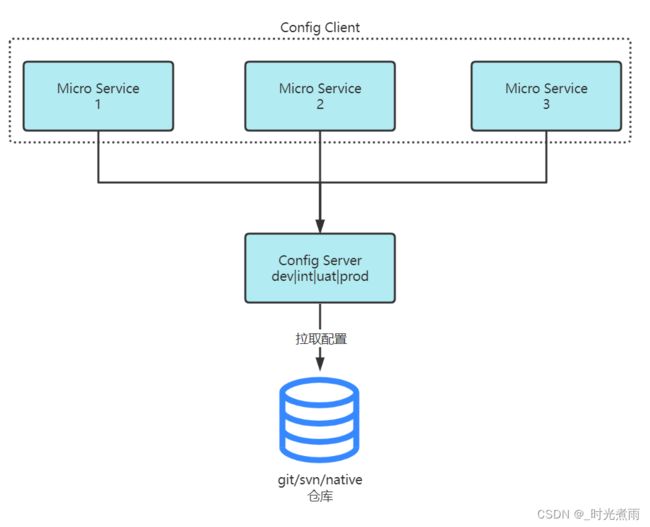- Uni-App 双栏联动滚动组件开发详解 (电梯导航)
FFF-X
uni-app
本文基于提供的代码实现一个左右联动的滚动组件,以下是详细的代码解析与实现原理说明:{{item}}{{section.title}}{{para}}exportdefault{//组件参数定义props:{leftData:{//左侧导航数据type:Array,default:()=>['章节1','章节2','章节3','章节4','章节5','章节6'],},rightData:{//右侧内
- spark explain如何使用
fzip
Sparkspark执行计划
在Spark中,explain是分析SQL或DataFrame执行计划的核心工具,通过不同模式可展示查询优化和执行的详细信息,默认情况下,这个语句只提供关于物理计划的信息。以下是具体使用方法及不同模式的作用:1.explain的基本语法在Spark3.0及以上版本,explain支持多种模式参数,通过mode指定输出格式:#DataFrame调用方式df.explain(mode="simple"
- C++缺省参数函数重载
ConFig.
c++算法数据结构
缺省参数大家知道什么是备胎吗?C++中函数的参数也可以配备胎。3.1缺省参数概念缺省参数是声明或定义函数时为函数的参数指定一个默认值。在调用该函数时,如果没有指定实参则采用该默认值,否则使用指定的实参。voidTestFunc(inta=0){cout_a=(int*)malloc(sizeof(int)*capacity);ps->_top=0;ps->_capacity=capacity;}i
- 【自建分布式数据库详细指南】(五)使用:常见API及使用问题
大板牙花生
分布式
延续前几篇文章,下面着重从一些基本的API讲讲从入门到习惯的常用方法,后续更新。USAGE1节点管理设置主节点,又成为协调节点SELECTcitus_set_coordinator_host('coord.example.com',5432);step1.创建节点select*frommaster_add_node('new-node',12345);step2.删除节点step3.新增节点后重新
- 《Oracle DBA入门实战:十大高频问题详解与避坑指南》
鸿·蒙
数据库Oracle数据库DBA入门数据库管理IT技术干货学习笔记
OracleDBA入门作业十问十答本文为OracleDBA入门作业整理,涵盖工具使用、配置管理及权限控制等核心知识点,适合新手快速上手。如有疑问或补充,欢迎评论区交流!1.DBA常用工具有哪些?OracleUniversalInstaller(OUI)用途:安装、升级或删除软件组件。OracleDatabaseConfigurationAssistant(DBCA)用途:通过图形界面创建、删除或修
- form的表单序列化
码田里的小白菜
ajax服务器javascript
百度可知:表单序列化的作用是:将表单内容序列化成一个字符串,方便Ajax传递表单值给服务器。随着Ajax的出现,表单序列化成为一种常见需求序列化应满足以下几点要求:1、对表单字段和值进行url编码,使用&符号分割2、不发送表单的禁用字段3、只发送选则的复选框和单选按钮4、不发送type为“reset”和“button”的按钮functionserialize(data){letlist=[];Ob
- 使用Python构建去中心化预测市场:从概念到实现
Echo_Wish
Python!实战!python去中心化开发语言
使用Python构建去中心化预测市场:从概念到实现大家好,我是Echo_Wish。今天,我们将深入探讨一个前沿的区块链应用——去中心化预测市场,并学习如何使用Python来构建一个简易的预测市场平台。预测市场是基于市场参与者对未来事件的预测来产生结果的地方,通常被用来预测政治事件、金融市场走向、体育比赛结果等。传统的预测市场如Augur、Polymarket等,基于去中心化平台,利用区块链技术确保
- RocketMQ学习-Springboot整合RocketMQ
wechatt_fee1024
面试mavenspringbootjava
SpringBoot整合RocketMQ需要注意的是SpringBoot的starter集成包时,要注意版本。因为SpringBoot集成的RocketMQ的starter依赖由Spring社区提供,迭代比较快,版本之间的差异还是比较大的。可能版本不同,就导致使用的时候出现错误。maven依赖,直接把我的maven工程的配置放到这里了。普通消息maven工程创建我直接创建了一个空的maven工程,
- Python自动登陆、登出南京理工大学NJUST校园网程序
JimesMz
python开发语言
本文程序针对南京理工大学NJUST和NJUST-FREE校园网开发,其他学校无法使用。文章目录开发目的使用说明参考资料开发目的今天突然想要用代码实现一下自动登陆校园网,上网搜寻了一下。知乎有一些教程,CSDN也有一些完整的代码,但是我跟随教程或者直接运行现有代码都没有能够成功登陆,且NJUST校园网付费,我想要一个“登出”功能,借助Kimi自己写了一下。本人技术不精,以实现功能为主。使用说明请确保
- Python调用fofa API接口并写入csv文件中
YOHO !GIRL
网络测绘python网络安全
前言一.功能目的二.功能调研三.编写代码1.引入库2.读取数据3.写入csv文件中总结前言上一篇我们讲述了目前较为主流的几款网络探测系统,简单介绍了页面的使用方法。链接如下,点击跳转:网络空间测绘引擎集合:Zoomeye、fofa、360、shodan、censys、鹰图然而当我们需要针对单个引擎进行二次开发时,页面就不能满足我们的需求了,这就需要参考API文档进行简单的数据处理,接下来,给大家介
- Flink sql-clinet 查询报错
lhfmqc
sql-clinet运行问题查询报错flink
Flinksql-clinet查询报错运行后进行select'helloworld’报以下错误,couldnotexecutesqlstatementjava.net.NoRouteToHostException:Noroutetohost在关闭防火墙之后仍无法解决这个时候你需要进入flinkconf配置中查看flink-conf.yaml文件,查看jobmanager.rpc.address该地
- 如何在苹果内购开发中获取App Store Connect API密钥-共享密钥理解内购安全-优雅草卓伊凡
卓伊凡
APP上架服务器运维
如何在苹果内购开发中获取AppStoreConnectAPI密钥-共享密钥理解内购安全-优雅草卓伊凡在苹果内购开发中,你可能会涉及到获取不同类型的“密钥”,以满足安全验证和开发的需求。以下介绍常见的获取方式:1.AppStoreConnectAPI密钥(用于服务器端验证内购)用途:如果你计划在服务器端验证用户的内购交易,以确保交易的真实性和防止欺诈,就需要使用AppStoreConnectAPI密
- rocketmq-client 4.3.0 在springboot中的使用
Myueye
JAVAjava
rocketmq-client4.3.0在springboot中的使用1、导入依赖2、配置文件属性3、编写配置类4、使用测试5、结果5.1RocketMQ后台显示5.2前端页面5.3后端后台1、导入依赖org.apache.rocketmqrocketmq-client4.3.02、配置文件属性mq.nameserverAdd=ip地址:9876mq.topic=top1(topic名称)mq.p
- 178.HarmonyOS NEXT系列教程之列表交换组件错误处理机制
harmonyos-next
温馨提示:本篇博客的详细代码已发布到git:https://gitcode.com/nutpi/HarmonyosNext可以下载运行哦!HarmonyOSNEXT系列教程之列表交换组件错误处理机制效果演示1.错误处理架构1.1错误类型定义//错误类型枚举enumErrorType{DATA_ERROR,//数据错误OPERATION_ERROR,//操作错误NETWORK_ERROR,//网络错
- 数据结构之顺序表和栈
Dust-Chasing
数据结构算法c语言
一、顺序表1.1顺序表的概念及结构顺序表是用一段物理地址连续的存储单元依次存储数据元素的线性结构,一般情况下采用数组存储。在数组上完成数据的增删查改。1.2静态顺序表静态顺序表,即使用定长的数组来存储元素,用下面一张图就可以清楚看懂1.3动态顺序表动态顺序表:使用动态开辟的数组存储。与静态顺序表不同,动态顺序表使用的数组大小可以动态变化,从而实现更灵活的储存数据。二、动态顺序表的实现静态顺序表只适
- 通过动态内存管理实现在VS2022中实现变长数组
Dust-Chasing
开发语言c语言数据结构算法
目录一、malloc函数和free函数二、calloc函数三、realloc函数不知道大家在使用vs2022编译器时有没有遇见过这样一个问题,当我们用一个变量来作为数组的大小时,编译器会报错,要求我们使用常量,这样一来就会使我们的内存空间被大量浪费,使我们非常的头疼,但是如果当我们学到动态内存管理时,我们就有了解决这个问题的办法。一、malloc函数和free函数C语言提供了一个动态内存开辟的函数
- 使用kubeadm部署高可用IPV4/IPV6集群---V1.32
使用kubeadm部署高可用IPV4/IPV6集群https://github.com/cby-chen/Kubernetes开源不易,帮忙点个star,谢谢了k8s基础系统环境配置配置IP#注意!#若虚拟机是进行克隆的那么网卡的UUID和MachineID会重复#需要重新生成新的UUIDUUID和MachineID#UUID和MachineID重复无法DHCP获取到IPV6地址sshroot@1
- Spring Bean 的生命周期:从创建到销毁的完整解析
一点多余.
java开发语言
引言:为什么需要了解SpringBean的生命周期?在Spring框架中,Bean是应用程序的核心构建块,理解其生命周期对于开发高效、稳定的应用至关重要。根据2023年JetBrains开发者调查报告,超过75%的Java开发者使用Spring框架,而Bean的生命周期管理是Spring的核心特性之一。以下数据展示了Bean生命周期的重要性:90%的Spring性能问题与Bean的初始化或销毁不当
- 197.HarmonyOS NEXT系列教程之图案锁振动反馈实现详解
harmonyos-next
温馨提示:本篇博客的详细代码已发布到git:https://gitcode.com/nutpi/HarmonyosNext可以下载运行哦!HarmonyOSNEXT系列教程之图案锁振动反馈实现详解效果预览1.振动功能实现startVibrator(vibratorCount?:number){try{vibrator.startVibration({//设置为'preset',可使用系统预置振动效
- 187.HarmonyOS NEXT系列教程之列表切换案例交互实现详解
harmonyos-next
温馨提示:本篇博客的详细代码已发布到git:https://gitcode.com/nutpi/HarmonyosNext可以下载运行哦!HarmonyOSNEXT系列教程之列表切换案例交互实现详解效果演示1.交互系统概述1.1交互类型//支持的交互类型1.长按拖动排序2.左滑删除3.点击选择4.拖拽动画1.2手势配置//组合手势配置.gesture(GestureGroup(GestureMod
- 181.HarmonyOS NEXT系列教程之列表交换组件整体架构详解
harmonyos-next
温馨提示:本篇博客的详细代码已发布到git:https://gitcode.com/nutpi/HarmonyosNext可以下载运行哦!HarmonyOSNEXT系列教程之列表交换组件整体架构详解效果演示1.组件概述1.1功能介绍ListExchangeViewComponent是一个支持列表项交换和删除的自定义组件,主要用于实现如扣款列表等场景。主要功能包括:列表项拖拽排序滑动删除自定义列表项
- 六十天前端强化训练之第二十九天之深入解析:从零构建企业级Vue项目的完整指南
编程星辰海
#前端前端Vue项目
=====欢迎来到编程星辰海的博客讲解======看完可以给一个免费的三连吗,谢谢大佬!目录一、Vite核心原理与开发优势二、项目创建深度解析三、配置体系深度剖析四、企业级项目架构设计五、性能优化实战六、开发提效技巧七、质量保障体系八、扩展阅读推荐一、Vite核心原理与开发优势1.1为什么选择Vite?Vite采用现代浏览器原生ES模块系统(NativeESM)作为开发服务器,颠覆了传统打包工具的
- Summernote个性化定制使用帮助(一)
秦岭熊猫
前端
DeepdiveInitializationoptionsCustomizebyInitializingvariousoptionsandmodules.Customtoolbar,popoverSummernoteallowsyoutocustomisethetoolbar.$('#summernote').summernote({toolbar:[//[groupName,[listofbut
- ios端使用TCplayer直播播放三秒直接卡顿bug
small_fox_dtt
iosbugTcplayer
1.查看配置项没问题setTcPlayer(){letthat=this;player=newTcPlayer("videoPlayer",{live:this.activatPlayType=="livePlay"?true:false,x5_type:"h5",x5_fullscreen:true,systemFullscreen:true,x5_orientation:1,x5_player
- Windows10本地部署Dify+Xinference
橘长长长
AI相关aidifyxinferenceglm4
目录前言一、安装必要项1.安装Docker和AnaConda2.安装Xinference3.通过Xinference部署本地glm4-chat-1m4.验证glm4-chat-1m是否部署完成5.安装Dify三、Dify中配置大模型1.浏览器输入http://localhost:80启动Dify页面2.随便注册账户登录3.配置Xinference四、运行Dify1.设置系统推理模型2.对话窗口验证
- unity3D获取游戏物体的四种方式
qq_35430208
unity3d游戏uinity3d图形渲染3d渲染游戏引擎unity3D获取游戏物体
一、第一种:二、第二种:voidStart(){print(transform.Find("GameObject(1)/GameObject"));print(transform.Find("GameObject(2)"));}三、第三种:比较耗性能,不推荐使用voidStart(){GameObjectmainCameraGo=GameObject.Find("MainCamera");//查找
- Docker之安装与配置
雨五夜
Dockerdocker容器运维
Docker之安装与配置一、Docker环境配置1.基本配置2.镜像加速3.网络配置4.数据持久化5.优化建议6.常见问题与解决方案7.补充工具二、Docker配置本地仓库指南1.拉取Registry镜像2.启动本地仓库3.配置Docker客户端Linux/macOSWindows4.推送镜像到本地仓库标记镜像推送镜像5.推送镜像到本地仓库6.管理本地仓库7.优化与安全性8.常见问题一、Docke
- V Rising夜族崛起的管理员指令大全
莱卡云(Lcayun)
云计算linux游戏服务器
使用方法:如果没有启用控制台需要先启用控制台打开游戏点击选项(如果在游戏内点击ESC即可),在通用页面找到启用控制台,勾选右边的方框启用在游戏内点击键盘ESC下方的波浪键(~)使用控制台指令:addtime向前调整游戏时间,addtime+空格+参数(参数必填),参数区间(1~12),可用于调节游戏中的白天天和黑夜的节奏,或者刷怪的节奏,但不能用于植物成熟和仆人打工时间的加快AdminAuth管理
- weixin089校园综合服务小程序+ssm(文档+源码)_kaic
开心毕设kaic_kaic
小程序rabbitmqmemcachebigdatapostgresql
摘要随着我国经济迅速发展,人们对手机的需求越来越大,各种手机软件也都在被广泛应用,但是对于手机进行数据信息管理,对于手机的各种软件也是备受用户的喜爱,校园综合服务被用户普遍使用,为方便用户能够可以随时进行校园综合服务小程序的数据信息管理,特开发了基于校园综合服务小程序的管理系统。校园综合服务小程序的设计主要是对系统所要实现的功能进行详细考虑,确定所要实现的功能后进行界面的设计,在这中间还要考虑如何
- 【笔记】扩散模型(五):Classifier-Free Guidance 理论推导与代码实现
LittleNyima
DiffusionModels笔记机器学习深度学习
论文链接:Classifier-FreeDiffusionGuidance上一篇文章我们学习了ClassifierGuidance,这种方法通过引入一个额外的分类器,使用梯度引导的方式成功地实现了条件生成。虽然ClassifierGuidance可以直接复用训练好的diffusionmodels,不过这种方法的问题是很明显的,首先需要额外训练一个分类器,而且这个分类器不仅仅分类一般的图像,还需要分
- 多线程编程之存钱与取钱
周凡杨
javathread多线程存钱取钱
生活费问题是这样的:学生每月都需要生活费,家长一次预存一段时间的生活费,家长和学生使用统一的一个帐号,在学生每次取帐号中一部分钱,直到帐号中没钱时 通知家长存钱,而家长看到帐户还有钱则不存钱,直到帐户没钱时才存钱。
问题分析:首先问题中有三个实体,学生、家长、银行账户,所以设计程序时就要设计三个类。其中银行账户只有一个,学生和家长操作的是同一个银行账户,学生的行为是
- java中数组与List相互转换的方法
征客丶
JavaScriptjavajsonp
1.List转换成为数组。(这里的List是实体是ArrayList)
调用ArrayList的toArray方法。
toArray
public T[] toArray(T[] a)返回一个按照正确的顺序包含此列表中所有元素的数组;返回数组的运行时类型就是指定数组的运行时类型。如果列表能放入指定的数组,则返回放入此列表元素的数组。否则,将根据指定数组的运行时类型和此列表的大小分
- Shell 流程控制
daizj
流程控制if elsewhilecaseshell
Shell 流程控制
和Java、PHP等语言不一样,sh的流程控制不可为空,如(以下为PHP流程控制写法):
<?php
if(isset($_GET["q"])){
search(q);}else{// 不做任何事情}
在sh/bash里可不能这么写,如果else分支没有语句执行,就不要写这个else,就像这样 if else if
if 语句语
- Linux服务器新手操作之二
周凡杨
Linux 简单 操作
1.利用关键字搜寻Man Pages man -k keyword 其中-k 是选项,keyword是要搜寻的关键字 如果现在想使用whoami命令,但是只记住了前3个字符who,就可以使用 man -k who来搜寻关键字who的man命令 [haself@HA5-DZ26 ~]$ man -k
- socket聊天室之服务器搭建
朱辉辉33
socket
因为我们做的是聊天室,所以会有多个客户端,每个客户端我们用一个线程去实现,通过搭建一个服务器来实现从每个客户端来读取信息和发送信息。
我们先写客户端的线程。
public class ChatSocket extends Thread{
Socket socket;
public ChatSocket(Socket socket){
this.sock
- 利用finereport建设保险公司决策分析系统的思路和方法
老A不折腾
finereport金融保险分析系统报表系统项目开发
决策分析系统呈现的是数据页面,也就是俗称的报表,报表与报表间、数据与数据间都按照一定的逻辑设定,是业务人员查看、分析数据的平台,更是辅助领导们运营决策的平台。底层数据决定上层分析,所以建设决策分析系统一般包括数据层处理(数据仓库建设)。
项目背景介绍
通常,保险公司信息化程度很高,基本上都有业务处理系统(像集团业务处理系统、老业务处理系统、个人代理人系统等)、数据服务系统(通过
- 始终要页面在ifream的最顶层
林鹤霄
index.jsp中有ifream,但是session消失后要让login.jsp始终显示到ifream的最顶层。。。始终没搞定,后来反复琢磨之后,得到了解决办法,在这儿给大家分享下。。
index.jsp--->主要是加了颜色的那一句
<html>
<iframe name="top" ></iframe>
<ifram
- MySQL binlog恢复数据
aigo
mysql
1,先确保my.ini已经配置了binlog:
# binlog
log_bin = D:/mysql-5.6.21-winx64/log/binlog/mysql-bin.log
log_bin_index = D:/mysql-5.6.21-winx64/log/binlog/mysql-bin.index
log_error = D:/mysql-5.6.21-win
- OCX打成CBA包并实现自动安装与自动升级
alxw4616
ocxcab
近来手上有个项目,需要使用ocx控件
(ocx是什么?
http://baike.baidu.com/view/393671.htm)
在生产过程中我遇到了如下问题.
1. 如何让 ocx 自动安装?
a) 如何签名?
b) 如何打包?
c) 如何安装到指定目录?
2.
- Hashmap队列和PriorityQueue队列的应用
百合不是茶
Hashmap队列PriorityQueue队列
HashMap队列已经是学过了的,但是最近在用的时候不是很熟悉,刚刚重新看以一次,
HashMap是K,v键 ,值
put()添加元素
//下面试HashMap去掉重复的
package com.hashMapandPriorityQueue;
import java.util.H
- JDK1.5 returnvalue实例
bijian1013
javathreadjava多线程returnvalue
Callable接口:
返回结果并且可能抛出异常的任务。实现者定义了一个不带任何参数的叫做 call 的方法。
Callable 接口类似于 Runnable,两者都是为那些其实例可能被另一个线程执行的类设计的。但是 Runnable 不会返回结果,并且无法抛出经过检查的异常。
ExecutorService接口方
- angularjs指令中动态编译的方法(适用于有异步请求的情况) 内嵌指令无效
bijian1013
JavaScriptAngularJS
在directive的link中有一个$http请求,当请求完成后根据返回的值动态做element.append('......');这个操作,能显示没问题,可问题是我动态组的HTML里面有ng-click,发现显示出来的内容根本不执行ng-click绑定的方法!
- 【Java范型二】Java范型详解之extend限定范型参数的类型
bit1129
extend
在第一篇中,定义范型类时,使用如下的方式:
public class Generics<M, S, N> {
//M,S,N是范型参数
}
这种方式定义的范型类有两个基本的问题:
1. 范型参数定义的实例字段,如private M m = null;由于M的类型在运行时才能确定,那么我们在类的方法中,无法使用m,这跟定义pri
- 【HBase十三】HBase知识点总结
bit1129
hbase
1. 数据从MemStore flush到磁盘的触发条件有哪些?
a.显式调用flush,比如flush 'mytable'
b.MemStore中的数据容量超过flush的指定容量,hbase.hregion.memstore.flush.size,默认值是64M 2. Region的构成是怎么样?
1个Region由若干个Store组成
- 服务器被DDOS攻击防御的SHELL脚本
ronin47
mkdir /root/bin
vi /root/bin/dropip.sh
#!/bin/bash/bin/netstat -na|grep ESTABLISHED|awk ‘{print $5}’|awk -F:‘{print $1}’|sort|uniq -c|sort -rn|head -10|grep -v -E ’192.168|127.0′|awk ‘{if($2!=null&a
- java程序员生存手册-craps 游戏-一个简单的游戏
bylijinnan
java
import java.util.Random;
public class CrapsGame {
/**
*
*一个简单的赌*博游戏,游戏规则如下:
*玩家掷两个骰子,点数为1到6,如果第一次点数和为7或11,则玩家胜,
*如果点数和为2、3或12,则玩家输,
*如果和为其它点数,则记录第一次的点数和,然后继续掷骰,直至点数和等于第一次掷出的点
- TOMCAT启动提示NB: JAVA_HOME should point to a JDK not a JRE解决
开窍的石头
JAVA_HOME
当tomcat是解压的时候,用eclipse启动正常,点击startup.bat的时候启动报错;
报错如下:
The JAVA_HOME environment variable is not defined correctly
This environment variable is needed to run this program
NB: JAVA_HOME shou
- [操作系统内核]操作系统与互联网
comsci
操作系统
我首先申明:我这里所说的问题并不是针对哪个厂商的,仅仅是描述我对操作系统技术的一些看法
操作系统是一种与硬件层关系非常密切的系统软件,按理说,这种系统软件应该是由设计CPU和硬件板卡的厂商开发的,和软件公司没有直接的关系,也就是说,操作系统应该由做硬件的厂商来设计和开发
- 富文本框ckeditor_4.4.7 文本框的简单使用 支持IE11
cuityang
富文本框
<html xmlns="http://www.w3.org/1999/xhtml">
<head>
<meta http-equiv="Content-Type" content="text/html; charset=UTF-8" />
<title>知识库内容编辑</tit
- Property null not found
darrenzhu
datagridFlexAdvancedpropery null
When you got error message like "Property null not found ***", try to fix it by the following way:
1)if you are using AdvancedDatagrid, make sure you only update the data in the data prov
- MySQl数据库字符串替换函数使用
dcj3sjt126com
mysql函数替换
需求:需要将数据表中一个字段的值里面的所有的 . 替换成 _
原来的数据是 site.title site.keywords ....
替换后要为 site_title site_keywords
使用的SQL语句如下:
updat
- mac上终端起动MySQL的方法
dcj3sjt126com
mysqlmac
首先去官网下载: http://www.mysql.com/downloads/
我下载了5.6.11的dmg然后安装,安装完成之后..如果要用终端去玩SQL.那么一开始要输入很长的:/usr/local/mysql/bin/mysql
这不方便啊,好想像windows下的cmd里面一样输入mysql -uroot -p1这样...上网查了下..可以实现滴.
打开终端,输入:
1
- Gson使用一(Gson)
eksliang
jsongson
转载请出自出处:http://eksliang.iteye.com/blog/2175401 一.概述
从结构上看Json,所有的数据(data)最终都可以分解成三种类型:
第一种类型是标量(scalar),也就是一个单独的字符串(string)或数字(numbers),比如"ickes"这个字符串。
第二种类型是序列(sequence),又叫做数组(array)
- android点滴4
gundumw100
android
Android 47个小知识
http://www.open-open.com/lib/view/open1422676091314.html
Android实用代码七段(一)
http://www.cnblogs.com/over140/archive/2012/09/26/2611999.html
http://www.cnblogs.com/over140/arch
- JavaWeb之JSP基本语法
ihuning
javaweb
目录
JSP模版元素
JSP表达式
JSP脚本片断
EL表达式
JSP注释
特殊字符序列的转义处理
如何查找JSP页面中的错误
JSP模版元素
JSP页面中的静态HTML内容称之为JSP模版元素,在静态的HTML内容之中可以嵌套JSP
- App Extension编程指南(iOS8/OS X v10.10)中文版
啸笑天
ext
当iOS 8.0和OS X v10.10发布后,一个全新的概念出现在我们眼前,那就是应用扩展。顾名思义,应用扩展允许开发者扩展应用的自定义功能和内容,能够让用户在使用其他app时使用该项功能。你可以开发一个应用扩展来执行某些特定的任务,用户使用该扩展后就可以在多个上下文环境中执行该任务。比如说,你提供了一个能让用户把内容分
- SQLServer实现无限级树结构
macroli
oraclesqlSQL Server
表结构如下:
数据库id path titlesort 排序 1 0 首页 0 2 0,1 新闻 1 3 0,2 JAVA 2 4 0,3 JSP 3 5 0,2,3 业界动态 2 6 0,2,3 国内新闻 1
创建一个存储过程来实现,如果要在页面上使用可以设置一个返回变量将至传过去
create procedure test
as
begin
decla
- Css居中div,Css居中img,Css居中文本,Css垂直居中div
qiaolevip
众观千象学习永无止境每天进步一点点css
/**********Css居中Div**********/
div.center {
width: 100px;
margin: 0 auto;
}
/**********Css居中img**********/
img.center {
display: block;
margin-left: auto;
margin-right: auto;
}
- Oracle 常用操作(实用)
吃猫的鱼
oracle
SQL>select text from all_source where owner=user and name=upper('&plsql_name');
SQL>select * from user_ind_columns where index_name=upper('&index_name'); 将表记录恢复到指定时间段以前
- iOS中使用RSA对数据进行加密解密
witcheryne
iosrsaiPhoneobjective c
RSA算法是一种非对称加密算法,常被用于加密数据传输.如果配合上数字摘要算法, 也可以用于文件签名.
本文将讨论如何在iOS中使用RSA传输加密数据. 本文环境
mac os
openssl-1.0.1j, openssl需要使用1.x版本, 推荐使用[homebrew](http://brew.sh/)安装.
Java 8
RSA基本原理
RS
